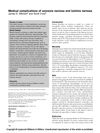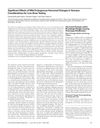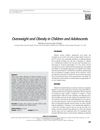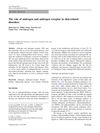Anorexia Nervosa and Bulimia Nervosa: Analysis of Prevalence, Mortality, Outcomes, and Endocrine Changes
January 2009
in “
Elsevier eBooks
”
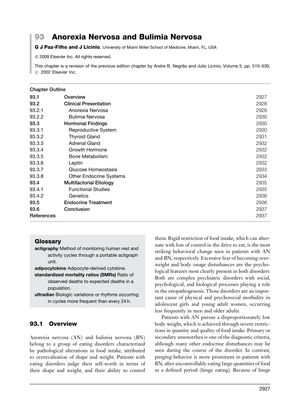
TLDR Anorexia Nervosa and Bulimia Nervosa are complex eating disorders with increasing incidence among young females, significant morbidity, and varying mortality rates, requiring more research for better treatment.
The 2009 document provides an extensive analysis of Anorexia Nervosa (AN) and Bulimia Nervosa (BN), detailing their prevalence, mortality rates, long-term outcomes, and associated endocrine changes. AN is characterized by extreme food restriction, fear of weight gain, and body image disturbances, with a high mortality rate (SMR 1.36 to 30.5), while BN involves binge eating followed by purging, with a lower mortality rate and no significant difference from expected population rates. The incidence of AN and BN was reported to be increasing among young females, with conflicting trends in studies. Both disorders are associated with significant morbidity and a variety of medical complications. The document also discusses the multifactorial etiology, including psychological, social, and biological factors, and notes that endocrine disturbances are likely secondary to the disorders. BN has a higher prevalence than AN, with risk factors including a history of AN, obesity, early menarche, and substance abuse. Depression is linked to worse BN outcomes, but BN is not associated with increased mortality. Long-term studies show a significant recovery rate for BN patients, but also a substantial relapse rate. Endocrine changes in AN and BN include alterations in various hormonal systems, with leptin playing a key role. The document concludes that AN and BN are complex disorders that require further research into their underlying biological mechanisms, and that understanding the pathophysiology of malnutrition in these disorders could help develop new approaches to related conditions like obesity and insulin resistance.
